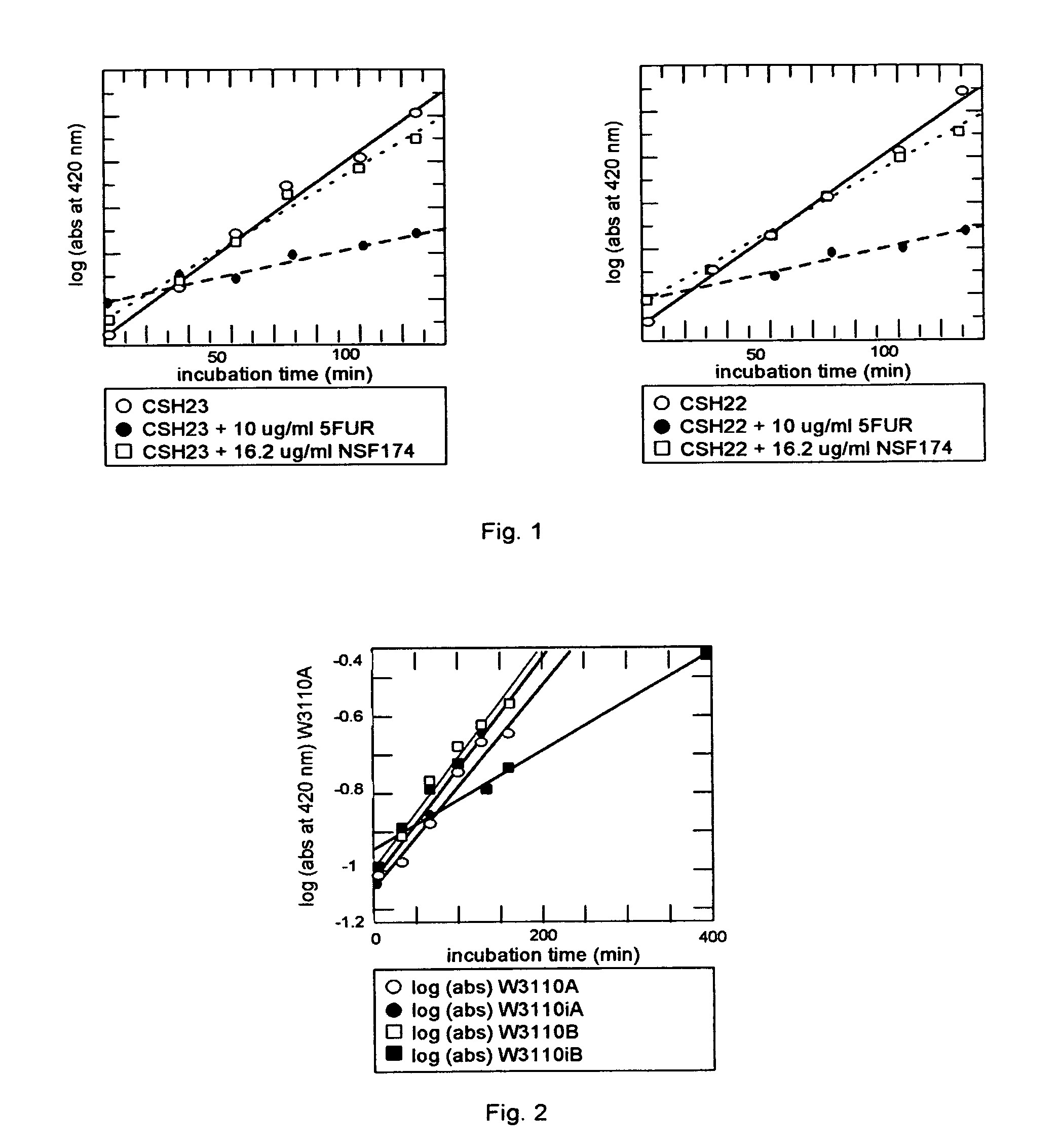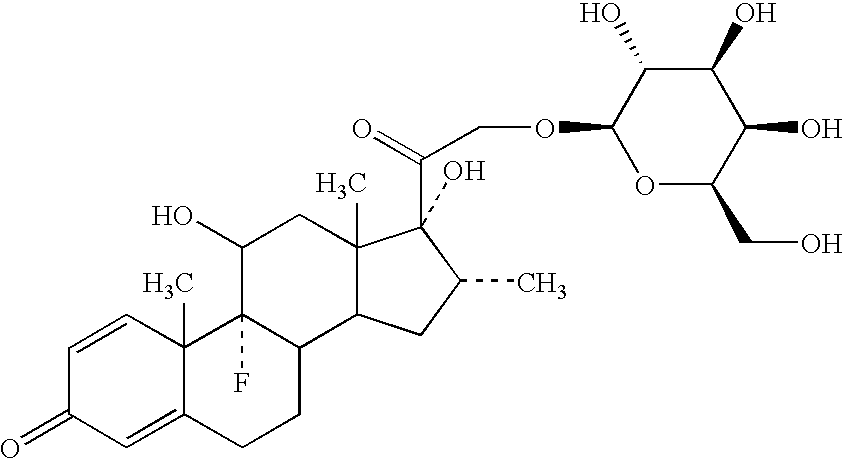Method of altering glycosylation of proteins in response to nojirimycin glucuronide in a plant cell expressing glucuronidase
a technology of glucuronidase and nojirimycin, which is applied in the field of prodrugs and can solve the problems of large amount of drug required to be delivered to the target tumor cell to effect the killing of the cell, and the inability to express a toxic gene product in the cell,
- Summary
- Abstract
- Description
- Claims
- Application Information
AI Technical Summary
Benefits of technology
Problems solved by technology
Method used
Image
Examples
example 1
Preparation of a Cycloheximide Galactoside Conjugate
[0133]The following compound was prepared:
[0134]
[0135]Cycloheximide-galactoside (M0147). An enzymatic method of synthesis was used to produce the β-D-galactoside of cycloheximide (3-[2-(3,5-dimethyl-2-oxocyclohexyl)-2-O-(β-D-galactopyranosyl)ethyl]glutarimide). Enzymatic galactosylation was carried out using a modification of the procedure of Wong, et al. (1991). Actidione (cycloheximide, 72 mg, 0.256 mmole) and ortho-nitrophenyl β-D-galactopyranoside (132 mg, 0.438 mmole) were dissolved in 0.10 M Na2HPO4 / 10 mM MgCl2 buffer (pH 7.0, 4 mL) and Tris buffer (pH 7.3, 1 mL) with warming. To this solution was added E. coli B-Galactosidase (172 U, 344 μL of a 500 U / mL solution in D.I. water). This mixture was allowed to react at 23° C., for 49 hours until t.l.c. analysis showed production of a lower Rf product (Rf 0.18, 7:3 ethylacetate:methanol irrigant). The reaction mixture was heated to 92° C. to destroy the enzyme, lyopholized to a w...
example 2
Preparation of a Dexamethasone Galactoside Conjugate
[0136]The following compound was prepared:
[0137]
Dexamethasone β-D-galactopyranoside (M0149) (21-O-β-D-galactopyranosyl-9-fluoro-11,17-dihydroxy-16-methylpregna-1,4-diene-3,20-dione) was prepared from the parent steroid by treatment with silver triflate / sym-collidine, 3 Å molecular sieves and acetobromogalactose in dichloromethane:acetonitrile (2:1) under anhydrous conditions in the dark for 20 hours. The fully protected glycoside (M0146) was isolated in 39% yield as the major isomer, which upon deblocking using catalytic sodium methoxide / methanol gave the title compound, in quantitative yield.
example 3
Preparation of a Hydroxymethylpsoralen Galactoside Conjugate
[0138]The following compound was prepared:
[0139]
[0140]4′-Hydroxymethyl-trimethylpsoralen was prepared using a modification of the procedure of Isaacs, et al. (Isaacs, S. T., et al., 1977). Under dry conditions, trimethylpsoralen (100 mg, 0.438 mmole) was dissolved in acetic acid (glacial, 10 mL) with heating, cooled to room temperature and chloromethylethylether (0.935 mL, 10 mmole) added with stirring. This mixture was allowed to stir at room-temperature, protected from light, in a sealed flask for 15 hours, after which time additional chloromethylethylether (1.0 mL, 10.8 mmole) was added and the reaction continued until t.l.c. analysis (9:1 chloroform:methanol) showed conversion of the starting material to a lower Rf, blue fluorescent product (Rf 0.92 to 0.68). The reaction mixture was cooled to 0° C. (ice-bath), filtered, and the filtrate evaporated to a white powder, which was suspended in distilled water (50 mL) and he...
PUM
| Property | Measurement | Unit |
|---|---|---|
| concentration | aaaaa | aaaaa |
| pH | aaaaa | aaaaa |
| pH | aaaaa | aaaaa |
Abstract
Description
Claims
Application Information
 Login to View More
Login to View More - R&D
- Intellectual Property
- Life Sciences
- Materials
- Tech Scout
- Unparalleled Data Quality
- Higher Quality Content
- 60% Fewer Hallucinations
Browse by: Latest US Patents, China's latest patents, Technical Efficacy Thesaurus, Application Domain, Technology Topic, Popular Technical Reports.
© 2025 PatSnap. All rights reserved.Legal|Privacy policy|Modern Slavery Act Transparency Statement|Sitemap|About US| Contact US: help@patsnap.com



